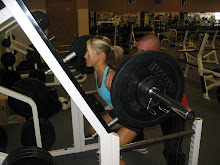A. Train smarter, not harder. Ask yourself, whether for sport or general fitness, is my training...
i. Ground-based (preferably standing) and closed-chain – feet or hands are connected to ground (return of power).
ii. Multi-directional (3-planes of motion) (sagittal: front/back, frontal or lateral: side/side, transverse: w/ rotation or around). We all must be able to move quickly and safely in any direction – and be strong muscularly on all sides of body (to reduce injury, aches and pains).
iii. Multi-joint – focus should be on whole-body movement-based strength training, not isolating a single-joint at a time. The only place for a single-joint lift (bicep curl, triceps extension, leg extension, leg curl, etc) is maybe in the Hypertrophy phase when the focus is simply to get bigger. The most functional and also time-efficient exercises are ones that will involve multiple joints at once, since this is how we move in everyday life.
iv. Applicable to the environment we live in – influenced by gravity, inertia, momentum and impulse. You must replicate the environment during training.
v. Incoportating Balance & Stability: Train brain and nerves to ‘talk to’ muscles to enhance proprioception à greater control of movement à greater execution of coordination and power. This is accomplished by training in an environment that is unstable (use 1-legged lifting, stability balls, balance exercises, etc) and multi-directional – improves coordination and reduces injuries (ACL, ankle, knee, etc). Unstable joints (especially shoulders, hips, knees, ankles) will ‘leak’ power that could have potentially been executed during movement.
vi. Emphasizing activation of core in all movement..
vii. Focusing on hip extensor muscles (primarily glutes, hamstrings, paraspinals/low back). The more they can load (think extend, ‘stretch’, eccentric), the more power they can unload (fire, concentric mvmnt) due to stretch reflex. Oftentimes, weakness in these muscles are main causes of pain (especially to the back).
viii. Generating power on a single leg through 1-L exercises and reaches.
ix. Emphasizing deceleration – ex) quads decelerate knee flexion in sudden stops/changes of direction (think squatting or lunging), hamstrings decelerate hip flexion (think squat and lunge again, RDLs or reaches), abdominals decelerate trunk extension (think how trunk loads during initial throwing, running or kicking action).
If you want to move, look and feel better, these Functional Training components should be the basis of your strength training program.
Monday, July 2, 2007
Subscribe to:
Post Comments (Atom)



No comments:
Post a Comment